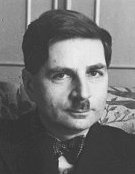| VIAS Encyclopedia provides a collection of tables and definitions commonly needed in science and engineering. |

|

Home  Science History Science History  Biographies Biographies  Walter Schottky Walter Schottky |
|||
| See also: Schottky Diode | |||






|
|||
Walter Schottky
Walter Schottky was born on July 23, 1886, in Zurich and grew up in Marburg and Berlin-Steglitz, where he visited the humanistic high school and the completed his high school diploma in 1904. After his studies in physics at Humboldt University in Berlin he earned his doctorate with Max Planck with a work on relativistic energetics and dynamics. From 1915, he was an employee in the research lab of the Siemens & Halske Company. In 1920, he habilitated in Würzburg with Wilhelm Wien. From 1927, he was again active as a scientific advisor of Siemens. His whole scientific life was particularly established on the behavior of electrons and ions in the high vacuum, in solid states and in semiconductors. In 1916, he discovered the protective grid or screen grid tube (tetrode). A further important experiment for the theoretical and practical control of the amplifier tubes is the discovery that by reduction of the electron affinity of electrons due to high electrical fields, the thermal electron emission density is increased (Schottky Effect). He was also involved with the extraction of electrons from the hot cathode, which causes current fluctuations in the applied electric circuit. Schottky called this shot noise. In 1924, Schottky and Gerlach invented the ribbon microphone. At the end of the twenties, works on semiconductors began: In 1929, he led research on the effects at the boundary between semiconductors and metals. Together with Eberhard Spenke he formulated the barrier theory and thereby explained the appearance of the electric rectifier. Diodes with metallic contacts vapor-deposited on semiconductors are also called today "Schottky-diodes". Schottky had two sons and a daughter with his wife Elizabeth. He died at the age of 90 in the Upper-Frankish Pretzfeld.
|
|||
Home  Science History Science History  Biographies Biographies  Walter Schottky Walter Schottky |
|||
Last Update: 2007-08-31


